Speaker
Description
Analyzing the dynamics of hydraulic heads is of great importance for both environmental protection purposes as well as for characterizing the consequences of anthropogenic activities (Glazer and Likens 2012). Long-term time series of hydraulic heads are commonly used for such purposes. These historic monitoring data usually however contains various errors and missing entries (e.g., Retiķe et al. 2022). Time series modeling using impulse response functions (TS-IRF) is a convenient tool for modeling and filling head series due to short calculation times and parsimonious parametrization. These models are data-driven: the impact of drivers (such as precipitation) on the target (the head) is calibrated only for a point in space (Collenteur et al. 2019). Thorough knowledge of the relationship between the model parameters and its environmental setting is still lacking.
We employed 4 different TS-IRF model structures to simulate head time series of 735 monitoring wells across the Baltic countries. Daily precipitation, potential evaporation, and temperature data were calibrated to the measured heads. The models were calibrated over 10 years of data and validated over the most recent 5 years of data. The Nash Sutcliff Efficiency (NSE) and the Root Mean Squared Error (RMSE) were used to compare the modeling effectiveness based on the model structure. Subsequently, the correlations between the models and the environmental settings were determined. Variables of 5 groups were used to describe the setting of monitoring wells: geological, climatic, topographic, basin and land cover. Spearman rank correlation and Random Forest regression analyses were performed between these environmental variables and 1) the model fit (expressed as NSE values), 2) the parameters A, n, and a of the IRF that characterize its shape. The correlations were further described with the help of SHapely Additive exPlanations values and Partial dependence plots.
We found that accounting for snow cover periods in the modeling is of high necessity in the Baltics. Model structures best suited for modeling head series are the nonlinear snow model with Gamma function (NLS) and the linear model with a four-parameter function (L4) due to a better representation of the snow processes. While the obtained correlation coefficients were low to moderate, they offer a valuable insight. Models performed best in locations with shallow groundwater and less pronounced seasonality. The IRF parameters correlate not only to the geological and climatic characteristics, but also the topography. The obtained results will be useful for further development of the modeling methodology and to discern locations where this modeling approach is best applicable.
References
Collenteur, R.A., Bakker, M., Calje, R., Klop, S.A., Schaars, F., 2019. Pastas: Open source software for the analysis of groundwater time series. Groundwater 57, 877–885. doi:10.1111/gwat.12925.
Glazer, A.N., Likens, G.E., 2012. The Water Table: The Shifting Foundation of Life on Land. AMBIO 41, 657–669. doi:10.1007/s13280-012-0328-8
Retike, I., Bikše, J., Kalvāns, A., Dēliņa, A., Avotniece, Z., Zaadnoordijk, W.J., Jemeljanova, M., Popovs, K., Babre, A., Zelenkevičs, A., Baikovs, A., 2022. Rescue of groundwater level time series: How to visually identify and treat errors. Journal of Hydrology 605, 127294. doi:10.1016/j.jhydrol.2021.127294.971

